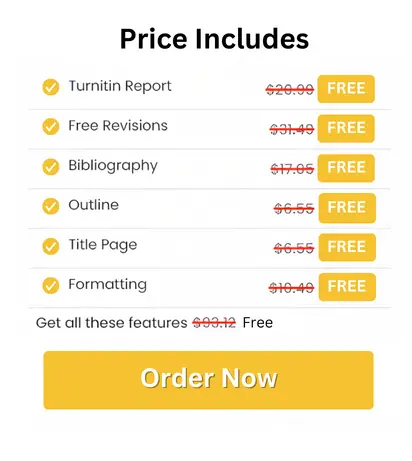
FIT5057 Project Management Case Study 1 Sample
Assignment Brief
OVERVIEW
? This is an individual task, including a written submission and in-class demonstrations.
? You will prepare a business case/proposal for a new project.
? Your proposed project should meet the client’s business objectives and requirements.
ASSIGNMENT TASK
Your task is to develop a comprehensive business case (project proposal) to present to your client for decision making. Your business case should address the following criteria:
Business Justification
− Start with some background information of the business and portfolio to set the scene.
− Demonstrate the alignment of the project with business strategies and portfolio objectives: Why is your proposed project a good fit for the business and the portfolio?
− Current Situation and Problem/Opportunity Statement: Discuss how and why the current situation, as mentioned in the case, presents an opportunity/problem for the portfolio. Demonstrate the contribution of the project to the value delivery system of the client’s organisation;
− Provide an overview of three options to address the Problem/Opportunity identified and compare the options followed by a clear conclusion and recommendation for the client. When identifying and analysing the option, consider the role of human-computer interactions and whether your proposed options are more human-focused or technology-focused.
o The comparison should include a comparison of the financial implications of the options. Use of suitable comparison tools such as weighted scoring models is encouraged.
− A reflection on any ethical implications of the project or products.
− Project and deliverable description including characteristics of the product and outcome.
Budget Estimate and Financial Analysis
− A preliminary estimate of the costs involved, including a breakdown of the estimated labour cost, hardware/software licensing, etc, with clear references and explanation on the costing and estimation approach.
− An NPV/ROI calculation - to be included in the Exhibits section - that includes the initial project investment, on-going maintenance cost and projected benefit/profit. The calculation should be supported by sufficient justification and references for the on-going maintenance and project benefit estimates.
− Demonstration of the task: Each student is required to demonstrate their Budget estimation and financial analysis to their tutors during their allocated applied classes that occur between weeks 1 to 4. Your demonstration should be supported by written presentation or slides of your analysis, justification and references.
o Your demonstration is accepted only if you receive satisfactory assessment from your tutors. If the demonstration is not accepted, you will have the opportunity to revise your work and demonstrate again until your tutor confirms that the work meets minimum requirements or until the end of week 4 applied class.
o You can not request extensions for the demonstration tasks.
− Submission of the task: After demonstration to your tutors and attaining their confirmation of meeting minimum requirements, you are also required to include a summary of the Cost-Benefit Analysis in the main report (based on the NPV/ROI attached in the exhibits). The analysis could include a brief overview of the financial and non-financial value (e.g. costs, benefits, revenue etc) of the project for the organisation in your business case. This is to prepare a cohesive business case and demonstrate consistency across the various sections of the business case.
− Important note: Without the demonstrations in applied classes the maximum grade your submitted work could achieve is a Pass or equivalent to 50% of the task’s available score.
Schedule Estimate
Estimate time required for the project and a project go-live date. Include at least three high level milestones with justifications in this section. Demonstrate that the schedule, budget and scope of the work (including deliverables and requirements, project delivery approach and cadence) are balanced and feasible.
Development Approach: Explain and justify the development approach
The development approach and project life cycle selected should be aligned with stakeholder and client values, types and the number of deliverables and the feasibility within the constraints of the project (expected schedule, budget and outcome/deliverable requirements).
Uncertainty and Risk analysis
− Summarise the top two potential risks that this project might face and any potential response strategy to navigate through the uncertainty.
− Discuss the likelihood of the identified risks impacting on the implementation and the success of this project, and tentative actions to reduce the likelihood or impacts of the risks.
Measurement and Quality Metrics
Provide a description of the product/s attributes and how to measure them. Include at least three attributes. Include two Key performance indicators (KPIs) that are used to evaluate the success of a project in delivering the product/s with the identified attributes.
Use of references
Students are expected to search for relevant extra readings and draw on suitable literature from academic publications as well as practitioner outlets. All sources of information must be fully and appropriately acknowledged using in-text citation and reference list. Use at least 5 references, 3 of which must be from peer reviewed academic journals or conference publications.
Solution
I Introduction
This Monash University student participation program improvement suggestion is explored whereby trying to improve the credit applications being the aim. University KPIs improve with happy students. Project does that. It can be estimated that by improving credit application processes will improve efficiency, user experience, and student achievement.
II. Business Justification
A. Background: According to Hansen et al. (2022) many schools, like Monash University, encourage youngsters to communicate and be glad to improve KPIs. As the educational landscape changes, Monash must adapt to what students want and set high criteria to succeed.
B. Client Context: The ever-growing Monash University prioritizes fairness and student happiness. Monash promotes all students, whatever of background, to excel in school and career. School supports diversity and inclusiveness.
C. Project Alignment: Monash University's key objectives align with making credit applications easier for students. By simplifying credit requests, the institution can give students more time for fun activities.
D. KPI Connection: Student satisfaction and academic progress are affected by the project. Simplifying credit applications will please Monash students. This helps children excel in school (Wojtanowska, 2020).
According to Butler (2022), e. Values: Monash University wants all students to succeed in school, the initiative fits its ideals. To make the school a welcoming and supportive environment for all children to study and flourish, Monash prioritizes initiatives that make it simpler for students and staff to communicate for university assignment help.
III. Current Situation and Problem/Opportunity Statement
A. Problem: As per Messina (2023) credit applications at Monash University are delayed and irritating, according to stakeholders. Waiting and issues make students dissatisfied and impede their schoolwork.
B. Opportunity: Consider these factors to make students happy and enhance KPIs. Credit may be obtained quicker using reduced processes. This may relieve administrators and benefit students.
C. Value Delivery: Bettering the credit application process speeds things up and makes students happy. By cutting red tape and simplifying processes, Monash University can demonstrate its student-centered approach to education (edtechimpact, 2024).
D. Considerations: Think on how the issue statement will affect people. Focusing on students' practical benefits supports Monash University's objective of offering a high-quality education and making the classroom useful.
IV. Analysis of Options
A. Option 1: Enhance Online Application Platform
To simplify and speed up Monash University's online credit application, users may make adjustments. Features including an easy-to-use interface, automated notifications, and real-time status changes are possible (Indiamart, 2024).
B. Option 2: Implement Peer-to-Peer Review System
Option 2 suggests creating a peer-to-peer review mechanism so students may critique other students' credit-seeking work. This cooperative approach is aimed to make students feel more connected and less dependent on management (Pinto, Bernardini & Marcacini, 2021).
C. Option 3: Introduce Personalized Support Services
Option 3 indicates students seeking credit should get tailored assistance. This might involve having specialists or certified advisers provide each student personalized counsel, responses, and assistance.
D. Recommendation: It can be said that Option 1 is recommended, which improves the online entry page. It is the quickest and most accessible way to address credit application issues. Long-term aims for Monash University include student satisfaction and managerial ease.
E. Justification: Option 1 improves loan applications easily and technologically. This will improve customer satisfaction, speed, and management's workload over time.
F. Ethical Considerations: All youngsters, including those who don't know much about technology or require assistance moving, should use it to address issues. The most pressing ethical issues are keeping the application process transparent and protecting student data.
V. Project and Deliverable Description
A. Deliverables: According to Sari, Sulistiyani & Meutia (2023) the project will boost internet credit applications. Better content development ($30,000), graphics and video editing ($15,000), and printing and marketing materials ($10,000) cost $55,000. The project cost $120,000. This comprises $60,000 for project managers, $20,000 for software and technology changes, $15,000 for marketing and promotion, and $25,000 for other costs. The project should cost $175,000. The credit application process enhancements will be executed properly with this amount [Refer to Appendix] (Dezhkam, Xue & Liu, 2022).
B. Characteristics: The items will be easier to use, and they will feature superior procedures and specialized support services for all credit-seeking students (monash.edu, 2024).
C. Reflect on User/Stakeholder Needs: The project's findings should include teacher, student, and management feedback. Throughout the creative process, this prioritizes client needs. User-centered design and specialized support services will make credit applications easy and fast for everyone.
VI. Budget Estimate & Financial Analysis
A. Costs Breakdown: Project Budget and Unit Material Enhancement comprise the "Applications for Credit" project budget. $30,000 for writing, $15,000 for graphics and multimedia, and $10,000 for printing and advertising = $55,000 for unit material enhancement. $120,000 project budget. Project management staff cost $60,000, software and technology $20,000, marketing and promotion $15,000, and other costs $25,000. Job should cost $175,000. [Refer to Appendix].
B. NPV/ROI Analysis: With a $38,159.40 Net Present Value (NPV), the project is predicted to generate more cash than it costs to start. The project's ROI was 22%, which is respectable considering its cost [Refer to Appendix].
C. Justification: The NPV and ROI calculations show that the "Applications for Credit" project is feasible and profitable. Due to its positive NPV and strong ROI, the project is likely to profit. This may eventually generate revenue for Monash University. Knowing the price shows how resources are utilized. This ensures project objectives are attained with little expenditures (Shiksha, 2024).
D. Long-Term Value and Non-Financial Benefits: Long-term, the initiative should produce money and offer non-monetary benefits. Monash University may improve credit requests to make students happy, office work simpler, and KPIs better. Project helps Monash achieve its mission of providing a quality education to all students. It also seeks to strengthen the university's student-centeredness and classroom learning (Wen, 2023).
VII. Schedule Estimate
A. Timeline:
.png)
B. Milestones:
One: Functional Prototype Completion
• The prototype should work by March's end. This major advancement prepares the product for testing and improvement.
Two: User Acceptance Testing Approval
• User approval testing is expected in April. If so, people like the system and it's ready to use. It will be easier to execute.
Three: System Go-Live
When the system goes live in April, the app is open. People may then utilize the improved loan application process, helping the initiative succeed.
C. Feasibility:
The recommended timeframe is manageable, and the chores are divided in a manner that advances the project. Keep an eye on resource utilization and dependencies to reduce risks and finish the work on schedule.
D. Proactive Steps:
Problems will be prevented by periodically assessing work, ensuring resources are available, and communicating. Planning for emergencies can also help the work go well.
VIII. Development Approach
A. Approach: The development approach for the "Applications for Credit" since the project is done in stages, one may make adjustments as required.
B. Justification: By listening to peers and responding to new demands, one may improve continuously. Thus, the final product will closely match what individuals and the corporation desire.
C. Project Type: For speedy results, the project uses iterative development, which involves modest stages and frequent repetition.
D. Stakeholder Feedback: Everyone participating in the development process should provide input at every level to ensure the response fits customer demands and helps the firm achieve its objectives.
E. Feasibility: The research ends up in choosing this strategy for the project since it considers objectives and size. This allows to plan openly and utilize the resources efficiently to complete on schedule.
IX. Uncertainty & Risk Analysis
X. Measurement & Quality Metrics
X. Conclusion
In conclusion, this concept aims to increase Monash University student involvement. Enhancing credit applications is the goal. Through institutional alignment and problem-solving, the program hopes to solve problems and benefit students and the university community. The Monash University mission-fulfillment method prioritizes student happiness and organizational efficiency. This aids academic success.
Reference List
Butler, M. J. (2022). Project portfolio management practices-a theoretical base and practitioner guidelines. International Journal of Project Organisation and Management, 14(1), 65-88. Retrieved From: https://www.inderscienceonline.com/doi/abs/10.1504/IJPOM.2022.121548 [Retrieved On 30th March 2024]
Dezhkam, M., Xue, S., & Liu, Z. (2019, August). Project portfolio management system, concepts and approach foundations. In IOP Conference Series: Earth and
Environmental Science (Vol. 310, No. 5, p. 052081). IOP Publishing. Retrieved From: https://research.tue.nl/files/167046695/Master_Thesis_Maud_van_Grinsven.pdf [Retrieved On 30th March 2024]
edtechimpact, (2024). Compare 2,000+ EdTech products... Retrieved from: https://edtechimpact.com/categories/ [Retrieved on: 30/03/2024]
Hansen, L. K., Rode, A. L. G., Sommer, A. F., & Svejvig, P. (2019, June). Toward a project portfolio management evaluation framework. In EURAM 2019. Retrieved From: https://pure.au.dk/portal/en/publications/toward-a-project-portfolio-management-evaluation-framework [Retrieved On 30th March 2024]
indiamart, (2024). Graphic Design ? 15,000/. Retrieved from: https://www.indiamart.com/proddetail/graphic-design-6568867648.html [Retrieved on: 30/03/2024]
Ja?ocha, B., & Bogacz-Wojtanowska, E. (2020). Project Portfolio Management: Tool for Strategy Implementation in Non-Governmental Organizations. In Start-Ups and SMEs: Concepts, Methodologies, Tools, and Applications (pp. 547-563). IGI Global. Retrieved From: https://www.igi-global.com/chapter/project-portfolio-management/245471 [Retrieved On 30th March 2024]
Messina, M. (2023). NEW PRODUCT DEVELOPMENT (NPD) PROJECT PORTFOLIO MANAGEMENT: WHAT IS THE ROLE OF LEARNING?. Retrieved From: https://www.researchgate.net/profile/Mariastella_Messina/publication/370324031_NEW_PRODUCT_DEVELOPMENT_NPD_PROJECT_PORTFOLIO_MANAGEMENT_WHAT_IS_THE_ROLE_OF_LEARNING/links/644aa2dd97449a0e1a607e04/New-product-development-NPD-project-portfolio-management-What-is-the-role-of-learning.pdf?origin=journalDetail&_tp=eyJwYWdlIjoiam91cm5hbERldGFpbCJ9 [Retrieved On 30th March 2024]
monash.edu, (2024). Software Catalouges. Retrieved from: https://www.monash.edu/esolutions/software/catalogue [Retrieved on: 30/03/2024]
Pinto, R. A., Bernardini, F., & Marcacini, R. M. (2021). PPM-HC: a method for helping project portfolio management based on topic hierarchy learnings. International Journal of Business Intelligence and Data Mining, 18(3), 364-382. Retrieved From: https://www.inderscienceonline.com/doi/abs/10.1504/IJBIDM.2021.114469 [Retrieved On 30th March 2024]
Sari, R., Sulistiyani, E., & Meutia, N. S. (2023). Prioritization Model for IT Project Portfolio Management in Private University: A Literature Review. Journal of Information Systems and Informatics, 5(1), 1-14. Retrieved From: https://www.journal-isi.org/index.php/isi/article/view/416 [Retrieved On 30th March 2024]
Shiksha, (2024). Monash University Course Fees. Retrieved from: https://www.shiksha.com/studyabroad/australia/universities/monash-university/courses [Retrieved on: 30/03/2024]
Wen, J. (2020, July). Research on Process Model of Project Portfolio Management. In 2020 International Conference on Advanced Education, Management and Social Science (AEMSS2020) (pp. 232-235). Atlantis Press. Retrieved From: https://www.atlantis-press.com/proceedings/aemss-20/125941992 [Retrieved On 30th March 2024]




 81 Isla Avenue Glenroy, Mel, VIC, 3046 AU
81 Isla Avenue Glenroy, Mel, VIC, 3046 AU



